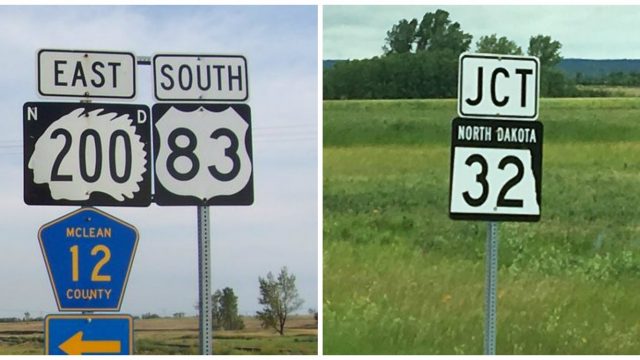Red Tomahawk Descendants Aren’t Pleased With NDDOT Change to Highway Signs

Earlier this month I was the first to report that the North Dakota Department of Transportation had quietly begun to remove the image of Native American leader Marcellus Red Tomahawk from the state’s highway signs.
Today in an Associated Press report a descendant of Red Thomahawk and a tribal historian express disappointment and frustration with the change:
One descendant of Marcellus Red Tomahawk said it “tears my heart out” that officials decided to swap out the markers featuring his great-great-grandfather with versions displaying the nondescript North Dakota outline, an homage to the upcoming 100th birthday of the state’s transportation agency.
“Anything that represents American Indians is being dismantled,” Wilbur Red Tomahawk said. “The time will come when the only way to know about an Indian is to read about them in a book or go to a reservation.” …
LaDonna Brave Bull Allard, a tribal historian at Standing Rock, said the removal of the signage of will be unsettling to the tribal members on the reservation that straddles the North Dakota and South Dakota border and is home to about 9,000 people, more than half of whom live in North Dakota.
“The emblem of Red Tomahawk has always been a great deal of pride with the tribe and the majority of people here do not know this is happening,” Brave Bull Allard said. “I think there are going to be some really upset people here on Standing Rock.”
What is perhaps the most remarkable thing about this change is how quietly it happened. “The agency decided to remove the American Indian imagery internally and had no public notification or hearings on the plan,” AP reporter James MacPherson writes.
The NDDOT is also evolving their story a bit on why the change happened. “We acknowledge that conversations took place about the Native American imagery, but the basis for our final decision is to provide nationwide uniformity with road signs and to recognize the state’s historic funding investment in North Dakota’s transportation system as part of the Department’s upcoming 100 year observance,” department spokeswoman Jamie Olson told me earlier this month.
But she told MacPherson that political correctness wasn’t a factor at all. “Olson said the move ‘in no way was done out of political correctness’,” MacPherson reports.
It seems clear to me, despite denials from the NDDOT, that concern over being politically correct was a factor in the change. Particularly when the primary reason they give for the change is a bit of a canard:
Olson said switching to an outline of North Dakota is being done not just to celebrate the agency’s anniversary next year but also to “help provide nationwide uniformity” with other states’ signage.
The latter reason, Olson acknowledges, is arguable, since only 15 or so states at present use outlines or silhouettes on highway signage. Most state markers are just simple squares or have unique logos. Washington state, for example, uses a silhouette of George Washington, and Utah uses a beehive, which represents hard work and industriousness.
As I wrote in my Sunday newspaper column, I think the NDDOT has made a mistake.
The NDDOT can maintain that the move was to create uniformity in highway signs across the nation, but isn’t that what political correctness is? An erasure of the interesting and provocative to be replaced by the bland and uniform?
The NDDOT no doubt kept the change under wraps to avoid this exact controversy, but they shouldn’t have. We should have had a debate about this, first. Detractors would say that it’s a waste of time over meaningless trivia.
I would argue that the icons and symbols which surround us every day are anything but meaningless. The mean all the more to marginalized tribal communities who, it is sad to say, are far too often out of sight and out of mind.




